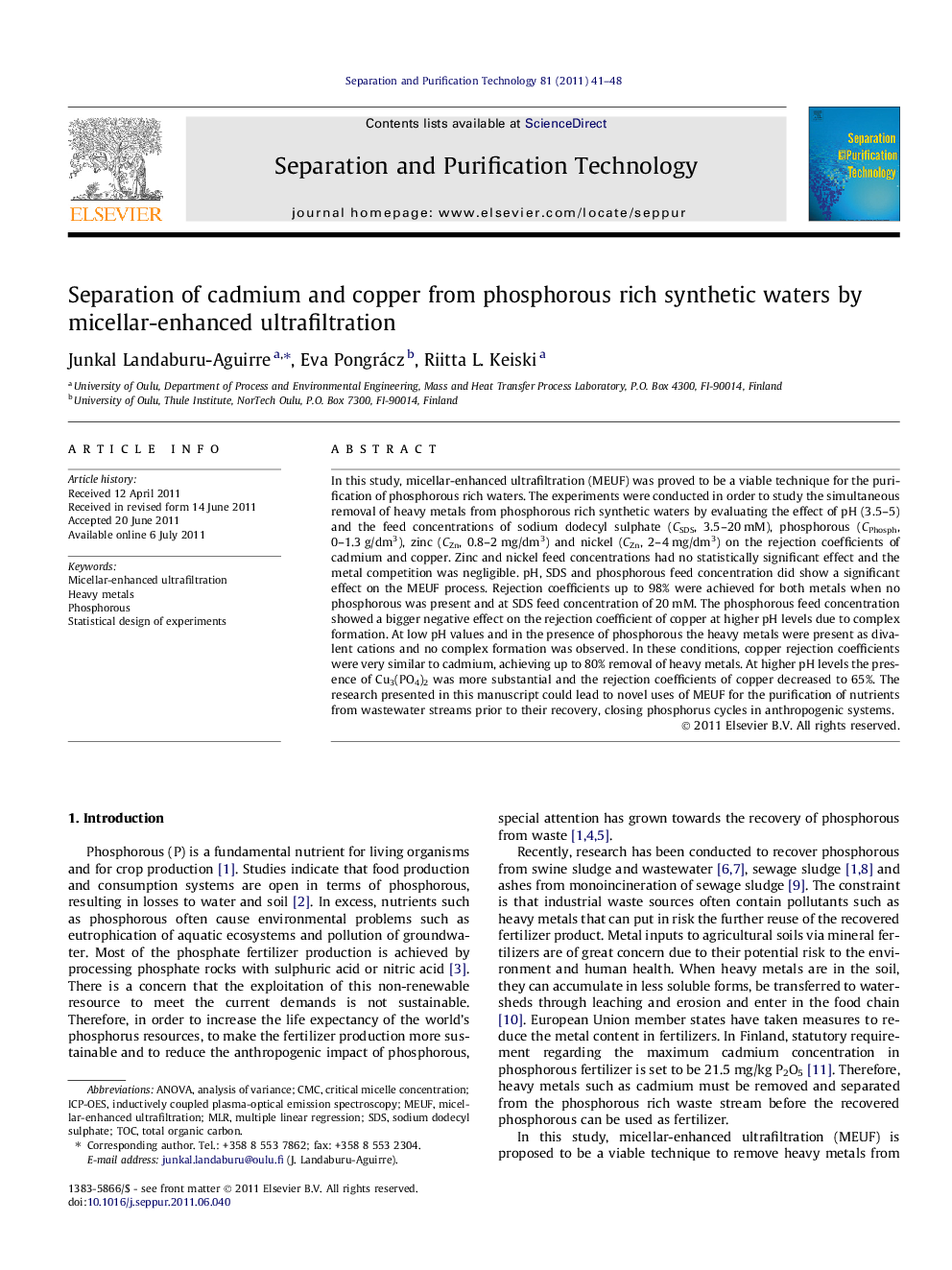| Article ID | Journal | Published Year | Pages | File Type |
|---|---|---|---|---|
| 642557 | Separation and Purification Technology | 2011 | 8 Pages |
In this study, micellar-enhanced ultrafiltration (MEUF) was proved to be a viable technique for the purification of phosphorous rich waters. The experiments were conducted in order to study the simultaneous removal of heavy metals from phosphorous rich synthetic waters by evaluating the effect of pH (3.5–5) and the feed concentrations of sodium dodecyl sulphate (CSDS, 3.5–20 mM), phosphorous (CPhosph., 0–1.3 g/dm3), zinc (CZn, 0.8–2 mg/dm3) and nickel (CZn, 2–4 mg/dm3) on the rejection coefficients of cadmium and copper. Zinc and nickel feed concentrations had no statistically significant effect and the metal competition was negligible. pH, SDS and phosphorous feed concentration did show a significant effect on the MEUF process. Rejection coefficients up to 98% were achieved for both metals when no phosphorous was present and at SDS feed concentration of 20 mM. The phosphorous feed concentration showed a bigger negative effect on the rejection coefficient of copper at higher pH levels due to complex formation. At low pH values and in the presence of phosphorous the heavy metals were present as divalent cations and no complex formation was observed. In these conditions, copper rejection coefficients were very similar to cadmium, achieving up to 80% removal of heavy metals. At higher pH levels the presence of Cu3(PO4)2 was more substantial and the rejection coefficients of copper decreased to 65%. The research presented in this manuscript could lead to novel uses of MEUF for the purification of nutrients from wastewater streams prior to their recovery, closing phosphorous cycles in anthropogenic systems.
Graphical abstractFigure optionsDownload full-size imageDownload as PowerPoint slideHighlights► Novel application of MEUF for the purification of phosphorous rich streams. ► Simultaneous removal of Cd and Cu by MEUF using statistical design of experiments. ► Ni and Zn feed concentration did not affect the rejection coefficients of Cd and Cu. ► Presence of phosphorous decreased the rejection coefficients of all heavy metals. ► Higher pH values decreased the removal of Cu and enhanced the removal of Cd.
